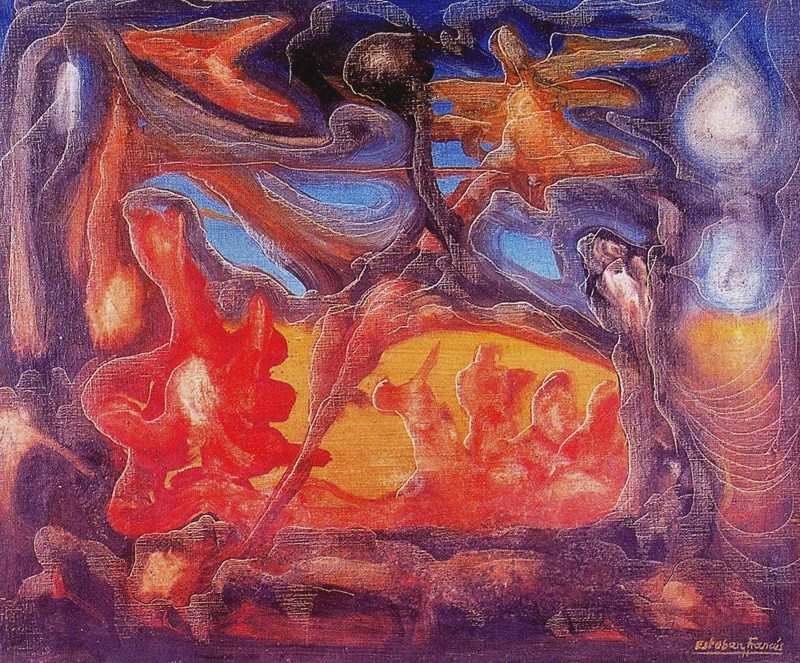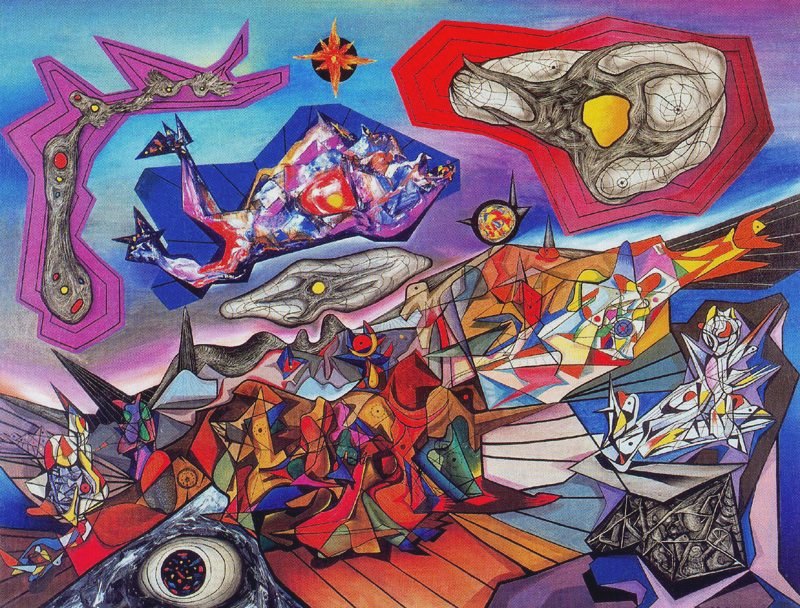





The Surrealism Website
Esteban (Esteve) Francés (1913-1976)
 The Catalan artist Esteban (Esteve) Francés was born in Port-Bou close to the French border and was brought up in Figueras, in North Eastern Spain. In 1925 he moved to Barcelona where he studied at the art and design School of La Lonja. He met Remedios Varo, with whom he shared a studio. For a while in the mid 1930s they were romantically involved. Through Varo he came into contact with Paul Eluard and Oscar Dominguez.
The Catalan artist Esteban (Esteve) Francés was born in Port-Bou close to the French border and was brought up in Figueras, in North Eastern Spain. In 1925 he moved to Barcelona where he studied at the art and design School of La Lonja. He met Remedios Varo, with whom he shared a studio. For a while in the mid 1930s they were romantically involved. Through Varo he came into contact with Paul Eluard and Oscar Dominguez.
With the outbreak of the Civil war he fled to Paris where he became a member of the surrealist group.
His earliest works appear to be somewhat under the influence of Dali.
From around 1936 he seems to have developed his own style using flowing interwoven organic biomorphic forms as with 'Barbed wire' of 1937. In these he uses grattage or scraping paint from the canvas when it is placed on a textured material.
In 1940, shortly after the start of World War II, he fled to Mexico and later moved to New York. It was then that he began working as a set and costume designer, becoming a regular contributor of Russian choreographer George Balanchine, one of the most emblematic figures of contemporary dance. Throughout the 1940s his work incorporated more linear geometrical elements, as in Dawn 1940.
It seems likely that he and Roberto Matta influenced each other at this time. We can see the links in an untitled work of 1943.
| 





































































 The Catalan artist Esteban (Esteve) Francés was born in Port-Bou close to the French border and was brought up in Figueras, in North Eastern Spain. In 1925 he moved to Barcelona where he studied at the art and design School of La Lonja. He met Remedios Varo, with whom he shared a studio. For a while in the mid 1930s they were romantically involved. Through Varo he came into contact with Paul Eluard and Oscar Dominguez.
The Catalan artist Esteban (Esteve) Francés was born in Port-Bou close to the French border and was brought up in Figueras, in North Eastern Spain. In 1925 he moved to Barcelona where he studied at the art and design School of La Lonja. He met Remedios Varo, with whom he shared a studio. For a while in the mid 1930s they were romantically involved. Through Varo he came into contact with Paul Eluard and Oscar Dominguez.